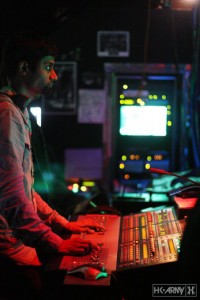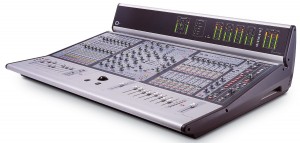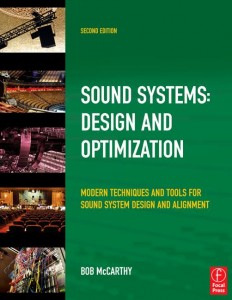Live Sound Insight: Gaining Confidence and Consistency, with Ryan John
The first in a series of live sound interviews and spotlights by audio engineer Jon Lurie.
Learning to Fly
In 2002, Charlie Smith started playing electric guitar in an alternative rock band, which, by 2013, has performed in nearly every club in New York City.
The nightly gigs are a pretty consistent source of income, but money has become a struggle. Searching for a side job, he comes across an interesting opportunity: A friend of his is putting on a string of concerts next month for local bands, and he is looking for a front-of-house engineer.
Knowing that he can’t turn this lucrative proposition down, Charlie accepts the offer, but he has to figure out how to most efficiently learn this position, and he has to learn fast. How is he best going to spend his time? What is his game plan? He doesn’t have years or months to become fluent, he has weeks. He needs a master to show him the way…
Ryan John is a recording engineer based in Sunnyside, Queens. He has toured with Robin Thicke, Envy On The Coast, Mayer Hawthorne, Allen Stone and many others. We traded e-mails while Ryan was overseas, working as the monitor engineer for Cody Simpson on the Justin Bieber tour.
Can you describe how you learned how to do live sound reinforcement?
I had been playing music for years, and around 1998 out of necessity, I started recording. After a short while, everyone started asking me to record their bands because I was apparently ahead of the technological curve and had the means to do it at home, unlike a lot of others.
My band also did some 200 shows a year or so, so I picked up the basics of show dynamics from watching sound guys set up and manage the stage.
After a while, some of the bands that I was recording asked if I’d go on short-run tours with them. Eventually, I agreed to, and was thrown in headfirst. I asked a lot of questions, and messed a lot of things up.
What were some early hurdles for you? How long did it take until you felt completely comfortable and confident?
In a way, I was lucky. I started before there was a massive influx of kids coming out of recording schools, but I was still berated for being a “kid that didn’t know anything about sound,” compared to guys who had been doing it since the ‘70s. Strangely, it’s still a roadblock now. I often don’t get taken seriously just because I look young, but I guess once you show up with a Pro Series, or with a Lake DLP, and know how to use them, people start taking you seriously pretty quickly.
On my first major tour, I remember them calling me up and asking if I knew how to use the brand new Digidesign Venue console, to which I replied, “Of course, great desk.” I got home, downloaded the manual and studied it for the next few weeks. Then I went out and was teaching the crew things even they didn’t know about the desk. It was probably two years before I felt I could walk into any venue and be all right.
Have you trained assistants or students to do FOH or monitors? And have they been able to reproduce your results?
Not technically, but I’ve done headline tours, wherein the support engineers were green, and I spent a lot of time showing them my methods and learning theirs.
I also often run into people who have never seen the consoles I carry, so I spend the time to teach them the ins and outs. I’m still friends with a few of those engineers, and boy have they gotten good.
Replicating results is an interesting thing because no two people hear something the same. Someone could replicate your method and get close, but no two people EQ an element exactly the same. On top of that, mixing really is both a scientific and creative art form—the art aspect of it causes no two mixes to sound alike.
Name the most important skills to have/methods to use when doing live sound.
Honestly, it’s all about really basic skills. Learning to tune a public address system is probably the most important skill there is because after that, everything is easy.
Then focus on mic placement and polar patterns—not just the names of them, but what they really mean—and plan out your stage with this in mind. Live is all about getting good isolation, or usable bleed. Gain staging is also one of the most important things to learn. There are plenty of people out there who just have levels all over the place, sending to outboard gear too quietly, having to gain it up and returning it noisily, or the outputs of a console at clip are barely hitting -18 on an amp, etc. Just make sure that everything lines up, makes sense and hits the various pieces of gear in their nominal operating range.
Describe the methods you use to capture these performances consistently.
I carry both consoles and microphones, so a lot of the variance gets eliminated. Since the band’s backline is the same, the only thing that changes everyday is the room and the P.A. This is where your ability to tune the room becomes important: If you can get that P.A. sounding really similar every night, you’ll do just fine.
I also record every show pre-output EQ. If you really want to get gritty about it, you can run playback of your previously recorded show through the current day’s P.A. The playback should sound reasonable, and pretty close to what that day’s show will sound like.
What are the biggest mistakes you’ve noticed novices make when doing live sound? What are the biggest misuses of time?
There are a lot of guys out there over-processing the snot out of their show and spending a ton of time with soloed instruments, making them sound big, while in context, they simply don’t fit.
It’s great to know what you want something to sound like; it’s useless to mess with something without an idea of where it will fit in the mix. I know a lot of guys who are having issues with vocal feedback through the house P.A., but are not really dealing with it properly.
Hacking an EQ is not really the best way to deal with this issue. Instead, take a look at the compression you’re applying to the vocal, the pick-up pattern of the vocal mic in regard to the P.A. coverage, or even the polarity and delay.
At the professional level, what are some incorrect or unnecessary methods/actions?
Honestly, “professional” just means that you’re paid to do it. There are guys out there who are absolutely crushing, and then there are guys who are doing a seriously mediocre job. Often times, the gig isn’t given to the best engineer, but to the guy who has been doing it a long time and knows the right people.
Regardless, in the end, if it sounds good, it is good. There are a lot of pros who are skipping over the system-tuning step, which, I feel, is 50 percent of your show. If your system doesn’t sound good, your show isn’t going to sound good.
Do you have any favorite instructional books or resources on live sound?
Yamaha Sound Reinforcement Handbook is a very, very technical read. It speaks a lot about speaker design, the physics of sound and how it works, and how to properly set up a P.A.
Bob McCarthy’s Sound Systems: Design and Optimization is even more detailed in the physics of sound. McCarthy goes into the details on how to put together a system with great coverage and sonics. Once you know those, you can focus on mixing—for that, I’d recommend books like Roey Izhaki’s Mixing Audio, or any of Bobby Owsinski’s books.
If you had to teach an inexperienced musician to do front of house for a concert in one month, what would the training be?
Well, having him/her be a musician already really helps, as musicians tend to understand arrangement and what instruments should sound like.
The training would cover a lot about system tuning and a lot of trying out different microphones to learn the tonality, with just a bit of actual mixing. I would make him/her listen to a lot of music and analyze it, understand the mix and understand how the elements go together. I’d also tell him/her not to be afraid to get rid of things if they don’t fit or if just don’t work (just because it’s there doesn’t mean you have to use it).
With that said, represent your artist’s vision the best you can; it’s their show, not yours.
If you were to create a cheat sheet for someone to use, what information would be on it?
Basics like 1 foot=1 millisecond and maybe an EQ chart (see this essential chart at obiaudio).
Do you still practice or study?
Yes. I’m doing a show pretty much every day, so that’s practice enough, and I read up a lot. I pretty much always read the articles on prosoundweb.com, and I’m always picking the brain of other engineers on tour. There is always more to learn.
You can follow Ryan on twitter @ryanojohn.
Jon Lurie is an audio engineer and musician living in Sunnyside, Queens. His favorite Beatles album is Abbey Road. Follow him on the interweb @jon_lurie.
Please note: When you buy products through links on this page, we may earn an affiliate commission.









